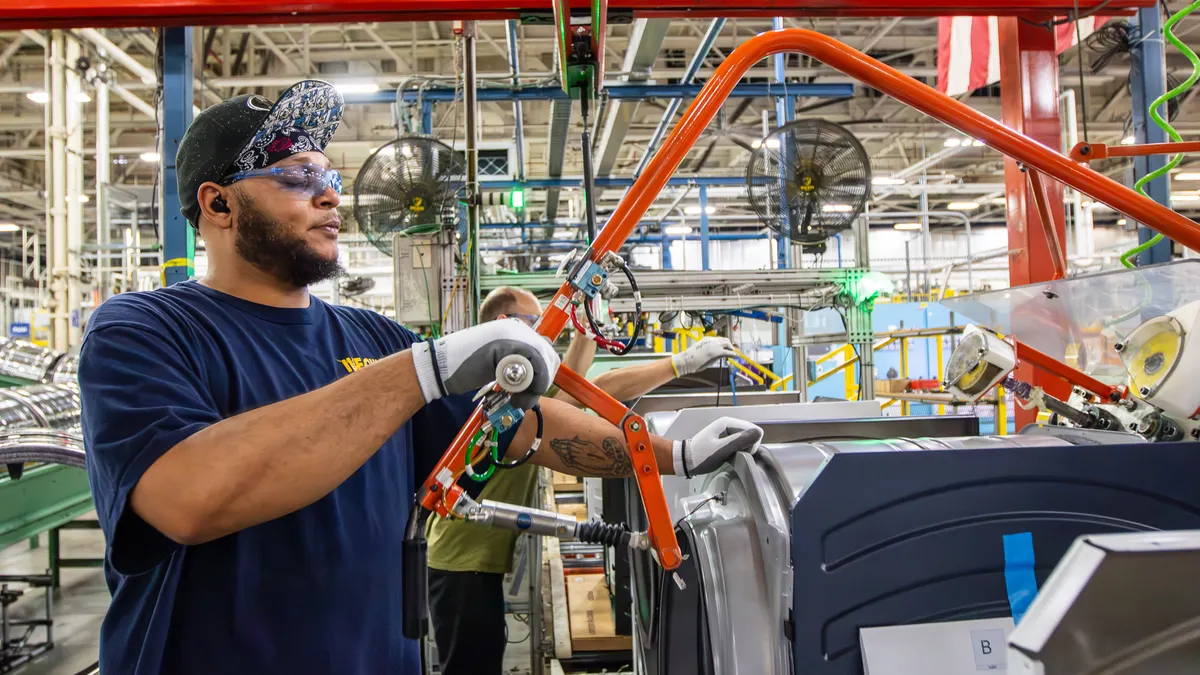Julie Iskow is president and chief operating officer and Jill Klindt is chief financial officer of Workiva Inc., which simplifies complex work for thousands of organizations worldwide by connecting data, documents, and teams. Views are the authors’ own.
Companies today pursue many cross-functional initiatives which make collaboration in the C-suite more critical than ever, especially as we set our post-pandemic course. In the past, the chief financial officer (CFO) and chief operating officer (COO) might have cooperated about as well as Edison and Tesla on the electrical current standard. Even when pursuing the same goal, they kept to their separate fiefdoms.
After all, in the interests of budget management and risk mitigation, the stereotypical CFO tightens the tap on capital outflow the COO may consider critical for day-to-day and strategic administrative and operational functions such as sales, marketing, and product development.

But in today’s high-growth companies, all the critical seats in the C-suite need to be filled with people thinking strategically about business outcomes, whether the job title involved is chief legal officer, chief people officer, or chief financial officer. Barriers are dissolving on the “swim lanes” that used to confine executive input into strategic decision-making.
Dissolving lanes
COOs are learning to recognize the value of the CFO perspective as beyond that of a mere “numbers cruncher.” Empowered CFOs are emerging from their cost-center cocoons for more than quarterly earnings calls. They are morphing from gatekeepers focused on margins and discounts, to respected voices weighing in on enabling and achieving business outcomes. And as CFOs become more deeply embedded in business planning, they can better appreciate how the COO’s plan to spend millions might bring a significant return on investment.
In this new world, Finance and Operations are allies, empathetic to each other’s agenda, uniting effectively to execute on shared company objectives. As an Accenture 2021 Global CFO Research report found, developing a successful CFO-COO feedback loop can result in “breaking down silos, collaborating across the C-suite and strategically rethinking ways of working.” It can spur innovation rather than stifle it.
From our own experiences forging a strong CFO-COO working bond, we’d like to share a few easy-to-implement steps that can be taken to strengthen the partnership.
Healthy alignment
We happen to get along well on a personal level, but that’s beside the point. The CFO and COO don’t have to be good friends, but they do need to trust each other. Transparency and accountability are key. What’s most important is agreement on corporate strategies and goals.
For example, within our own company, we recognize how we can collaborate on deploying resources to execute on higher level projects that drive better or faster growth. We have recently collaborated on strategic initiatives related to global expansion, developing a high performing partner ecosystem, and investing in our reporting solution for environmental, social and governance (ESG) measures.
But the point is not that we agree on certain specific initiatives; it is that we are continuously integrated and aligned on all operational aspects of the business. The CFO’s teams should be involved in operations, and operational teams should be relentlessly focused on the company’s financial health, the financial impact of operational actions, and the cost of achieving business outcomes.
Continuous engagement
Here are a few examples of how we — and our teams — engage with each other to calibrate on company strategy and operational objectives:
- The CFO sits on the operational team’s weekly meetings. Her updates on finance and accounting issues are the first agenda item.
- The CFO reviews the COO’s “Health of the Business” metrics with the operational team every week and offers perspective and input.
- The CFO and the COO both sit in executive management team meetings.
- The CFO and the COO sit on two key management committees together (software purchasing committee and the pricing and packaging committee).
- The CFO has analysts from the financial planning and analysis team (FP&A) working side-by-side with business units to understand their activities, performance metrics, and budget and headcount needs for more accurate planning.
- The CFO’s team provides input to the COO and engineering teams on product development, offering a user perspective on our company’s own financial software solutions.
- The COO stays current on the challenges and the responsibilities of CFOs and makes an effort to gain insight into external issues that may shape the CFO’s priorities.
While the list above mentions many “physical” collaborations, the most important one is the meeting of minds on shared corporate goals. If only it were as easy as a Vulcan mind-meld!
Decisions by data
Naturally, philosophical differences occasionally arise, but we are able to minimize conflict. We acknowledge the other’s support for the values of the company and rely on data for our decision-making. It’s hard to maintain a disagreement when you’re presented with data that underscores your values and desired business outcomes.
Of course, data connectivity is a huge challenge for the C-suite today. CFOs and COOs are united in their need to make sense of company data to achieve good business outcomes, and to work with chief information officers (CIOs) to make that happen. How do you collect, manage, integrate, and leverage your data? How do you protect it? How do you make sure you have data integrity? It’s become an even greater obstacle in the current hybrid workplace environment to gather data and to coordinate the processes around connecting and reporting it.
For example, emerging reporting disclosures related to ESG initiatives may include financial and non-financial data pulled from disparate sources such as sustainability reports, surveys, statutory disclosures, annual reports, SEC filings, and earnings call transcripts. These have to be gathered from many business groups, including human resources, marketing, manufacturing, and facilities.
Another strategic area for COO-CFO collaboration is in decisions on IT-related purchases such as Software-as-a-Service (SaaS) applications that form part of a company’s digital transformation. The reasons for the purchase are the COO’s remit while the CFO analyzes the investment pros and cons, as well as oftentimes being a guinea pig for the CIO during implementation as a major user of financial planning and enterprise resource planning (ERP) system software.
Cross-silo alliances are thus key to easier delivery of trustworthy data to shareholders, employees, customers, partners, and other stakeholders.
The sum of its parts
No executive stands alone, despite what the backstabbers in “Succession” would have you believe. Ambitious CFOs today not only hold purse strings; they are deeply involved in helping set company goals and direction. The best way to achieve success is by aligning on its definition for the company and collaborating across multiple functions. The CFO and the COO, once viewed as an odd couple rather oblivious to each other’s motivations, can serve as a model for the rest of the company simply by making an effort at continuous engagement. It makes for a healthier way to run a business.



















